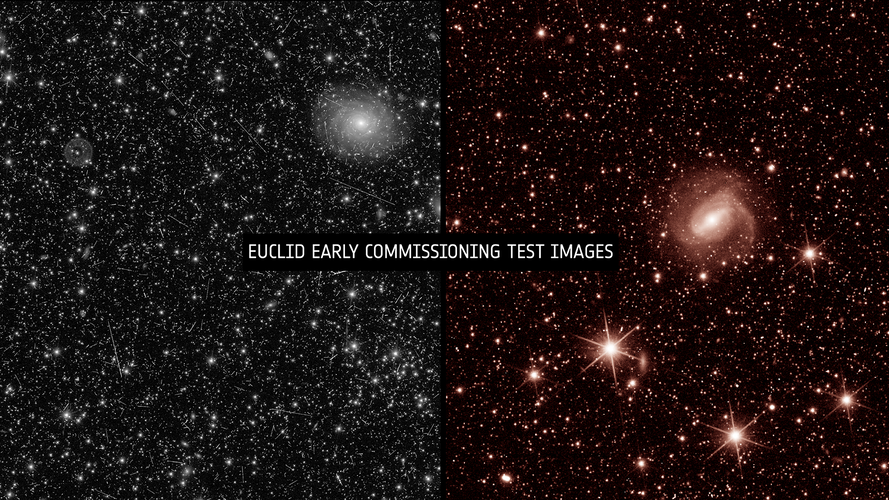The Universe in visible light

Euclid’s VISible instrument (VIS) will take super sharp images of billions of galaxies to measure their shapes. Looking closely at this first image, we already get a glimpse of the bounty that VIS will bring; whilst a few galaxies are very easy to spot, many more are fuzzy blobs hidden amongst the stars, waiting to be unveiled by Euclid in the future. Though the image is full of detail, the area of sky that it covers is actually only about a quarter of the width and height of the full Moon.
Mark Cropper from University College London led the development of VIS: “I’m thrilled by the beauty of these images and the abundance of information contained within them. I’m so proud of what the VIS team has achieved and grateful to all of those who have enabled this capability. VIS images will be available for all to use, whether for scientific or other purposes. They will belong to everybody.”
Reiko Nakajima, VIS instrument scientist adds: “Ground-based tests do not give you images of galaxies or stellar clusters, but here they all are in this one field. It is beautiful to look at, and a joy to do so with the people we've worked together with for so long.”
The image is even more special considering that the Euclid team was given a scare when they first switched the instrument on: they picked up an unexpected pattern of light contaminating the images. Follow-up investigations indicated that some sunlight was creeping into the spacecraft, probably through a tiny gap; by turning Euclid the team realised that this light is only detected at specific orientations, so by avoiding certain angles VIS will be able to fulfil its mission. This image was taken at an orientation where the sunlight was not an issue.



